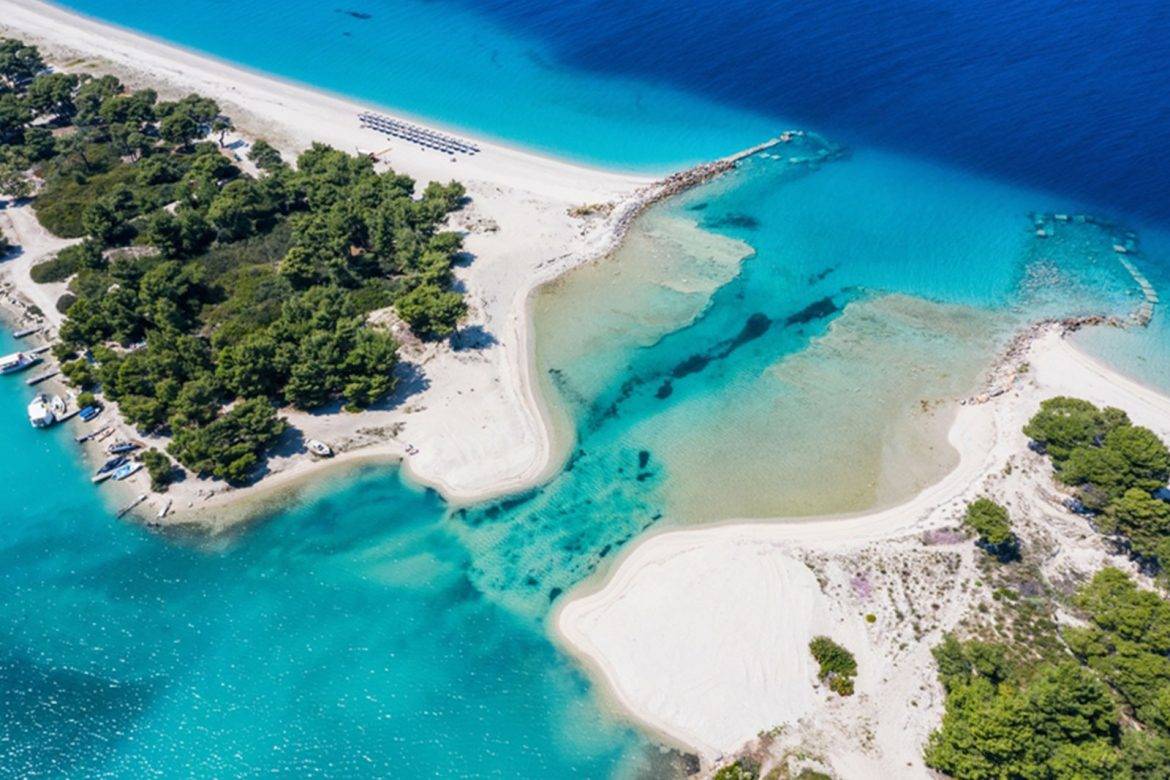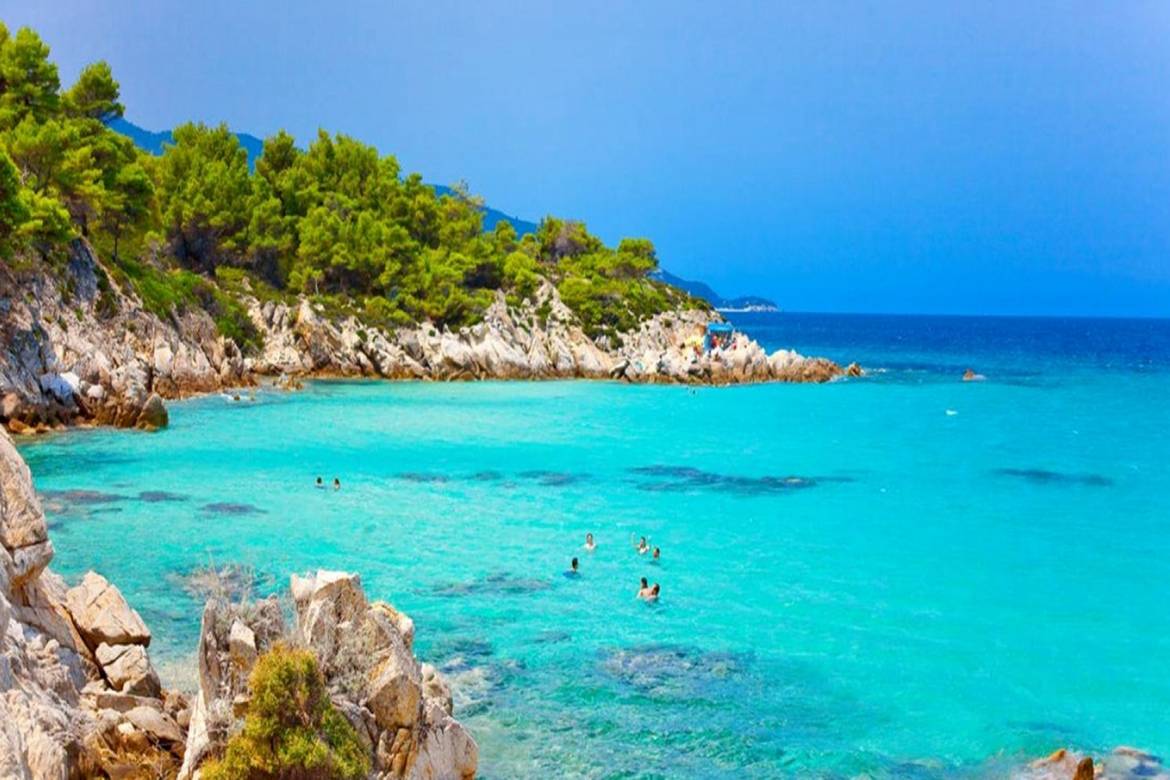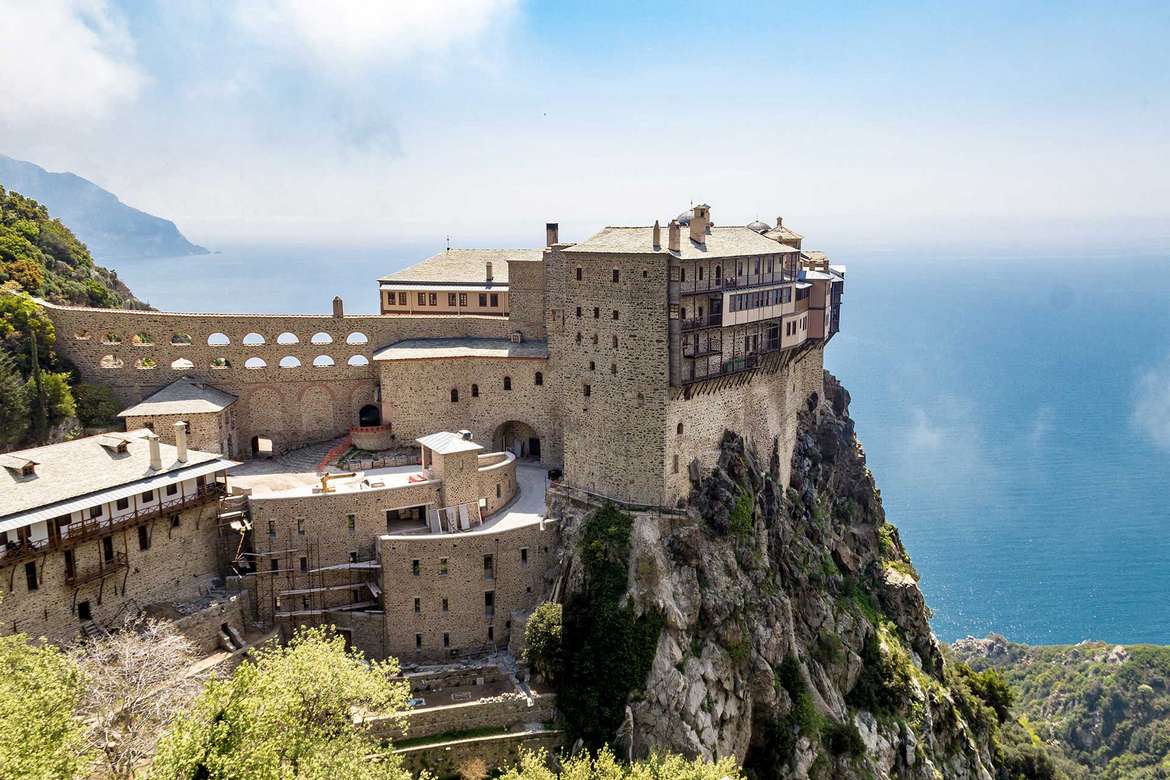General information
Halkidiki is a beautiful destination with thousands of tourists swarming into it during the summer! The area is constantly developing, and has a lot to offer both in the tourist and the cultural sector. It also has a rich history encompassing the teachings of Apostle Paul, but also the Olynthiacs of Demosthenes.
The area is situated in central Macedonia, and owes its name to settlers from Eretria and Chalkida. The ancient city of Stagira, birthplace of the well-known philosopher and scientist Aristotle, personal tutor of Alexander the Great, son of Philip king of Macedonia, is also in this area!
The Petralona cave is another important site of Halkidiki, where traces of Archanthropi and anthropological findings, dating back to some 700,000 years, were discovered. According to the topography of Halkidiki, it was also the hideout of Heracles.
In terms of morphology, the Cassandra, Sithonia and Athos peninsulas extend into the sea, giving it a unique shape, reminding the trident of Poseidon, god of the sea!
In Chalkidiki, besides the truly beautiful beaches, straight out of a dream, there are pristine natural landscapes and meadows with wildflowers, designated as Natura protected areas.
Cholomon forest, where Aristotle chose to live for a few years, is a real gem of the area! The forest is full of enchanting footpaths among fir and oak trees, and has 17 cycling routes. The picturesque villages of the area and their remarkable architecture, such as Taxiarchis and Arnea, are also of special interest.
As to accommodation, Chalkidiki offers countless options including organized camping sites, rooms to let, small hotels, picturesque guesthouses, small seaside settlements and luxurious hotel complexes. As far as food is concerned, it has plenty of restaurants and traditional fish taverns offering dishes that will satisfy even the most demanding clients!
Cassandra

Cassandra is the westernmost part of Chalkidiki, and the most densely populated one. Full of idyllic landscapes, indented coastlines and crystal clear beaches, it offers its visitors endless opportunities for fun thanks to its numerous bars and beach bars that can make their holidays truly unforgettable! As far as entertainment is concerned, it boasts the top festivals of Sani and Siviris.
The peninsula owes its name to Cassander King of Macedon. According to Greek mythology, it is in Cassandra that the Giants, offspring of Gaea were born, from the blood that fell from his wound when Uranus was mutilated by Cronus.
It is in this area that the famous Gigantomachy took place when the Giants came in conflict with the Olympian gods. Giant Enceladus is also buried there; mythology has it he has not died and, in his effort to break free from Earth, he is causing earthquakes and volcanic eruptions from time to time.
Sithonia

Sithonia owes its name to Sithon, who was the son of Poseidon. The peninsula is literally swallowed up by dense vegetation, countless coves with golden beaches and transparent emerald waters!
It is considered a small paradise, ideal for a more relaxed holiday. In fact, opposite Vourvourou there is also complex of small islands of exotic beauty, worth visiting! Diving centres, harbours, casinos, luxury shops and restaurants, organized marinas and sporting events, attract more and more visitors.
At the centre of the peninsula, lies Mount Itamos, which the locals call Dragountelis. The mountain owes its name to the yew (“Itamos” in Greek), a tree that grows there. In fact, the oldest tree of this particular phylum, not only in Greece, but in all Europe, lives in this forest. It is 2000 to 3000 years old and is over 20 meters high! The yew can even be deadly, as, apart from the fleshy part of its fruit, all its other parts are toxic. It also has the ability to regenerate and resproute forever.
Athos

The peninsula of Athos owes its name to the rock that the Giant Athos threw against the Olympian gods. It is divided into two areas, the municipal district of Aristotelis and the autonomous monastic polity of Mount Athos, where there is a ban for women pilgrims. There are 20 monasteries run by a council of representatives in which the Greek State also participates.
Athos has a more homely atmosphere, with tourists who choose the areas near Mount Athos looking for something different. In fact, religious tourism is quite developed and an integral part of the area. Ammouliani, situated opposite Ouranoupoli, is the only inhabited island of Chalkidiki, always there for you to explore!
It is a true that Chalkidiki is a pole of attraction for countless visitors from Greece and abroad, as it offering vacation alternatives to suit all tastes! It can also be described as a "little wonderland", which tourists can admire, explore and experience with all their senses!








